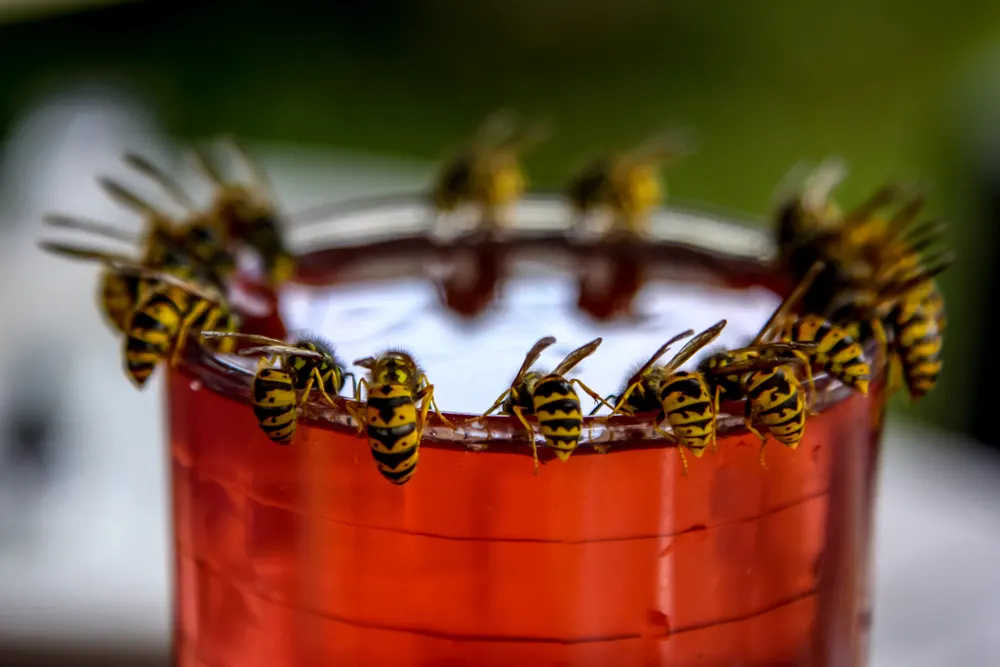
Wasps have earned a reputation for being the absolute jerks of the flying insect community.
With menacing looks and an aggressive behavior that fears precisely no one, wasps are equipped with a venomous stinger that can cause serious pain again and again.
They have no problem whatsoever with helping themselves to a taste of your food while you’re still eating it off your plate. Or flying concentric circles around your head for no evident reason.
Indeed, wasps inspire panic wherever they go and the last thing you want to do is aggravate a wasp. There’s nothing quite like the dread of discovering a nest within the cracks and crevices of your home.
Despite all this, wasps have admirable qualities too and provide incredible benefits to the gardener and the ecosystem writ large.
About Wasps…
Wasps are closely related to ants and bees, and share a common evolutionary ancestor. With about 100,000 identified species, wasps make up a diverse group in the order Hymenoptera.
They are distinguishable from bees by a pointed lower abdomen and a sharply cinched waistline that separates the segments of its body. Wasps are also less furry than bees and possess mandibles for cutting and biting.
Wasps are either solitary insects that live alone or are social creatures that form colonies.
Social and Solitary Wasps
Solitary wasps typically build nests in an isolated spot underground, in hollowed plant stems, or holes in trees where they bring back prey to feed their young. The vast majority of wasps are the solitary type, and while they do have stingers, they are used primarily to paralyze their prey and not for defense.
Social wasps, on the other hand, have a highly organized society featuring one or more queens with male drones and female workers. Each spring, the queen builds a small nest and lays eggs to hatch workers, who then in turn continue to build and expand the nest.
The structure is composed of multiple six-sided cells made from regurgitated wood and plant matter that creates a paper like material.
As the queen continues to lay eggs throughout the summer, a single colony can be comprised of more than 5,000 members. By winter, all wasps die off with the exception of one newly fertilized queen who is able to survive the cold to start the process anew the following spring.
Social wasps are members of the Vespidae family, and are easily recognizable by their bright yellow and black coloring and powerful stings. When disturbed, these types emit a pheromone that alerts other wasps of danger, sending them into a stinging frenzy. Only females have stingers and they can sting repeatedly.
Most Common Types of Wasps
Yellow Jacket Wasps
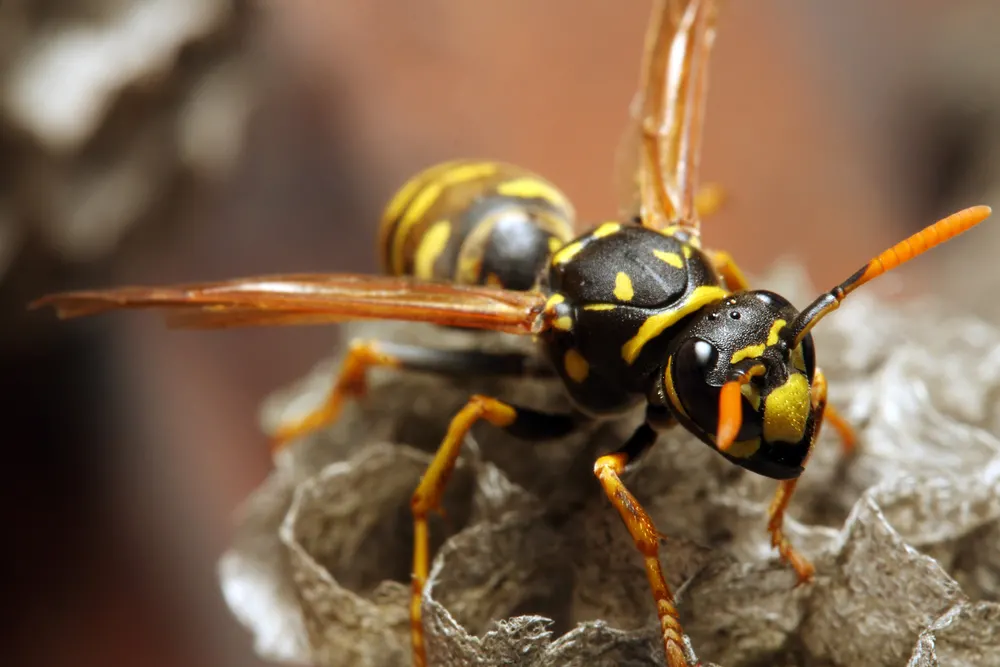
With several species native to North America, yellow jackets are among the most commonly spotted wasp in this part of the world.
Yellow jacket wasps are social and predatory, marked with yellow and black rings around the lower abdomen, and reach a size of a half inch in length.
More aggressive than other types, adult yellow jackets feed on meat, fruit, and other sugary stuff, and so are a frequent guest at barbecues and picnics. The majority of stings are delivered by this species.
Yellow jacket nests can be found underground or inside trees and buildings. While the interior consists of hexagonal cells, the outer layer is covered in a papery enclosure.
Paper Wasps
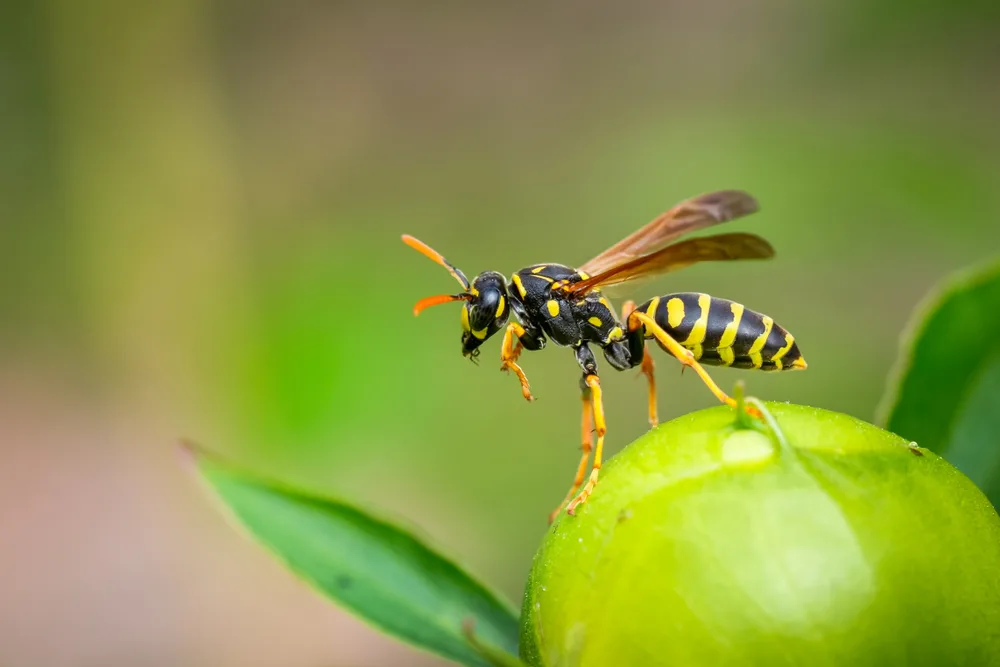
Often mistaken for yellow jackets, paper wasps have yellow and black markings as well, but are more slender of body and reach a length of about 1 inch.
Much more docile and less of a nuisance when eating outdoors, paper wasps are social creatures that feed on nectar and other insects. They will typically only use their stingers when their nest is disturbed.
While meadows and gardens are their hunting grounds, paper wasps build their nests in trees and shrubs or perched on building eaves and overhangs. Like yellow jackets, their nests are composed of a myriad of six-sided cells, but are left exposed and uncovered.
European Hornets
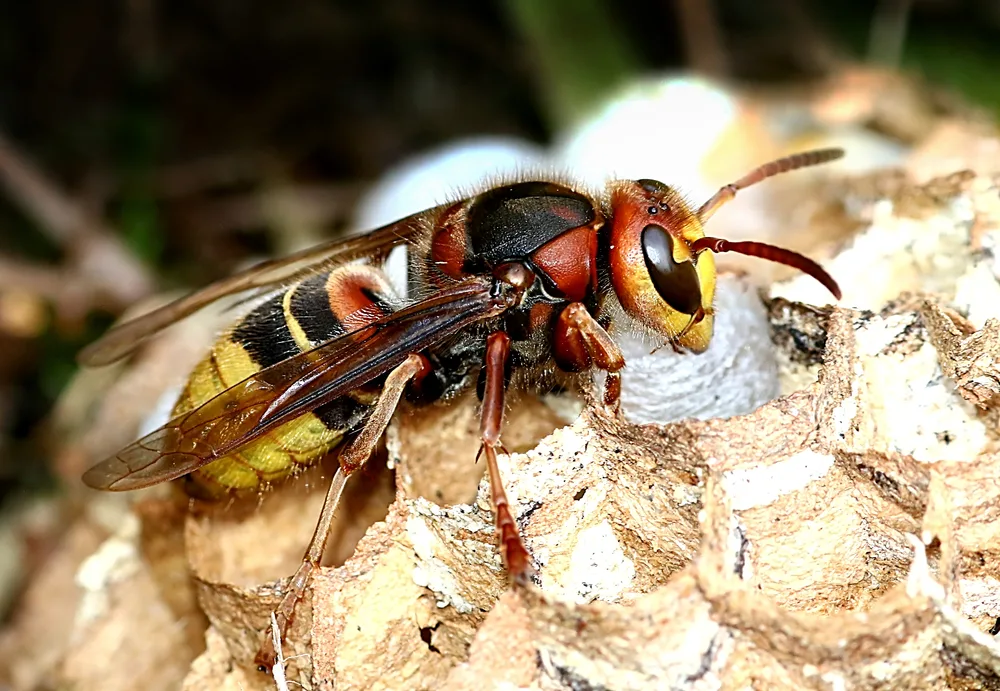
The most commonly sighted hornet in North America is the European hornet, which was introduced by settlers in the 1800s.
Larger than other wasps at 1.5 inches in length, European hornets have yellow and brown markings and are covered in short, furry hairs. They feed primarily on other insects, fallen fruit, and nectar.
Generally European hornets avoid conflict and will only attack when defending their colony. Their nests are similar to yellow jackets, hexagonal cells covered with a papery envelope. These can be found in the crevices of tree trunks, or hung from branches or building eaves.
Parasitic Wasps
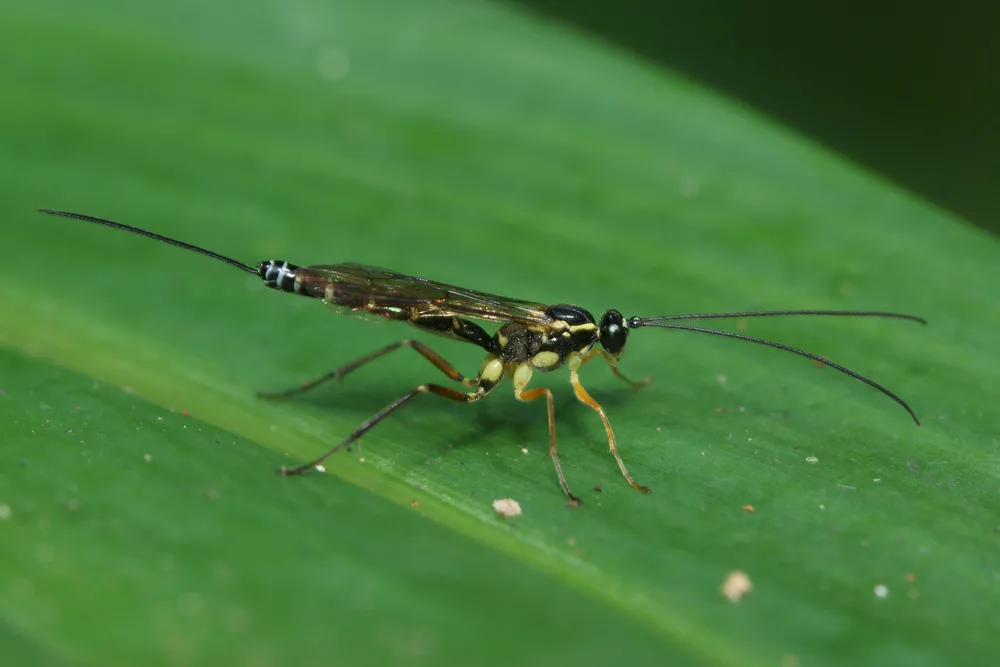
Markedly different in behavior and appearance from wasps of the Vespidae family, parasitic wasps are often solitary and rarely have the ability to sting. They range in size from 1 inch to so small they are difficult to see.
Potter wasps, giant ichneumon wasps, Brachonid wasps, and Trichogramma wasps are some of the more commonplace parasitic varieties in North America.
Parasitic wasps do not form colonies or build nests. Rather, they lay their eggs on or inside host insects. When the eggs hatch, larvae feed on the insect until it’s time to pupate. When maturity is reached, the newly “born” wasp will emerge by eating its way outside of the host.
Females of this type do have a long point at the base of the abdomen that could be mistaken for a stinger. This is actually the ovipositor that she uses to piece the body of the host insect to deposit her eggs within. When not laying eggs, parasitic wasps feed on nectar from flowers.
3 Ways Wasps Benefit the Garden
Instead of cursing, we should celebrate each time we spot a wasp in the backyard.
Here’s why:
Wasps Provide Excellent Pest Control
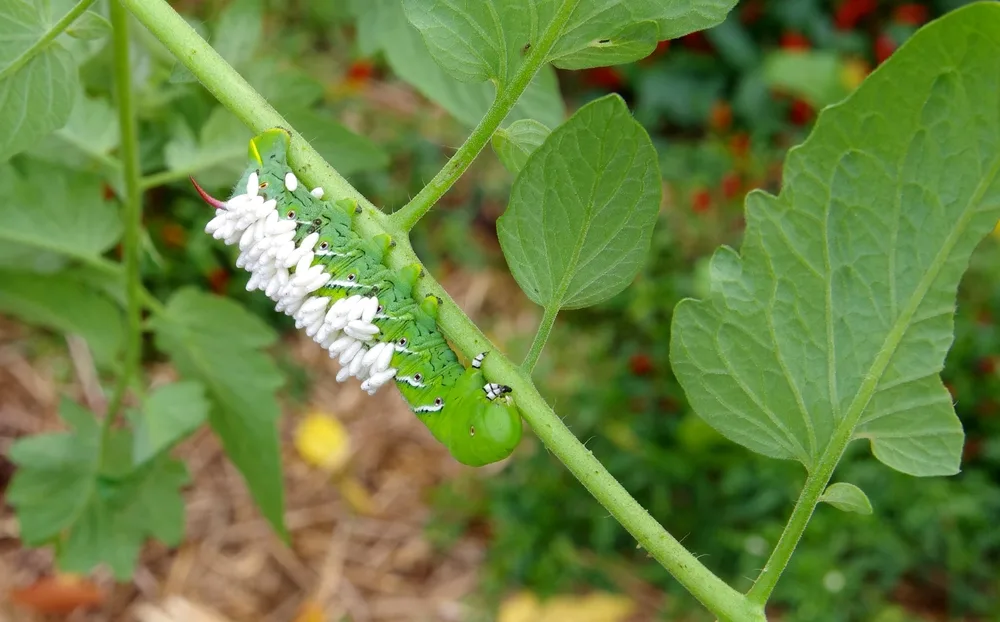
Wasps have evolved over millions of years to be super efficient and effective predators.
With thousands of hungry mouths to feed each season, wasps seek out many of the pest insects that gobble up your crops: aphids, hornworms, armyworms, grubs, weevils, spiders, whiteflies, leaf miners, caterpillars, and cabbageworms to name but a few.
Wasps are quite opportunistic and will hunt any insect in the vicinity, including other wasps.
As a wholly organic, biological pest control, wasps provide a very valuable service to the gardener – for free. If you can tolerate their sometimes irritating behavior, they are well worth having around.
After all, the enemy of my enemy is my friend!
Wasps are Pollinators
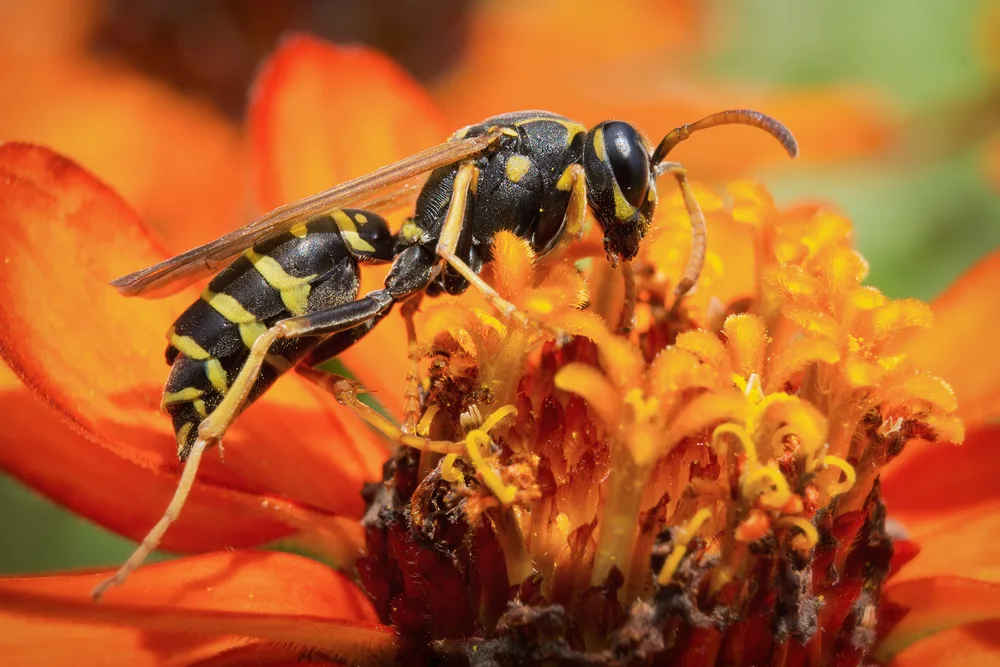
When they aren’t duking it out with other insects to feed their young, adult wasps primarily eat flower nectar and can be found buzzing from plant to plant.
Although wasps aren’t as effective as bees, due to their smooth bodies and lack of hairs, they do visit a large number of plants and carry pollen between them.
Some wasps are specialist pollinators and have a symbiotic relationship with fig trees and certain orchid species where if one went extinct, the other would follow.
And as pollinators decline in health and population worldwide, we need all the help we can get.
Wasps Help Sustain the Food Web
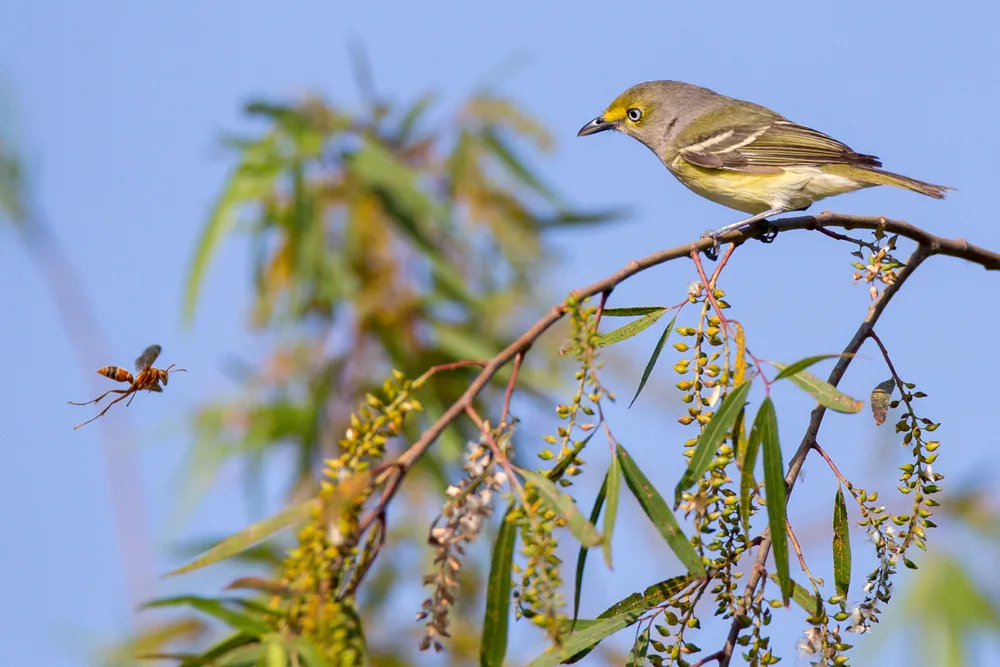
Without wasps, many fruits and flowers would fail to be fertilized and we would be overrun with pest insects that destroy food crops.
While wasps keep bug populations in check, what prevents them from becoming too overpopulated themselves?
It turns out plenty of animals eat adult wasps and their larvae.
Many species of bird, including woodpeckers, sparrows, bluebirds, and warblers, hunt down wasps.
Frogs, lizards, toads, salamanders, and other reptiles and amphibians will endure some stings for a tasty meal.
Mammals large and small, spanning bears, skunks, raccoons, weasels, badgers, and mice, will also fearlessly attack a wasp nest to eat the larvae inside.
6 Ways To Deal With Wasps When They Become A Problem
Just because we should live in harmony with wasps doesn’t mean it will necessarily be easy.
Here are some tips for how to safely deal with problematic wasps and their nests:
1. Set out sugary drinks
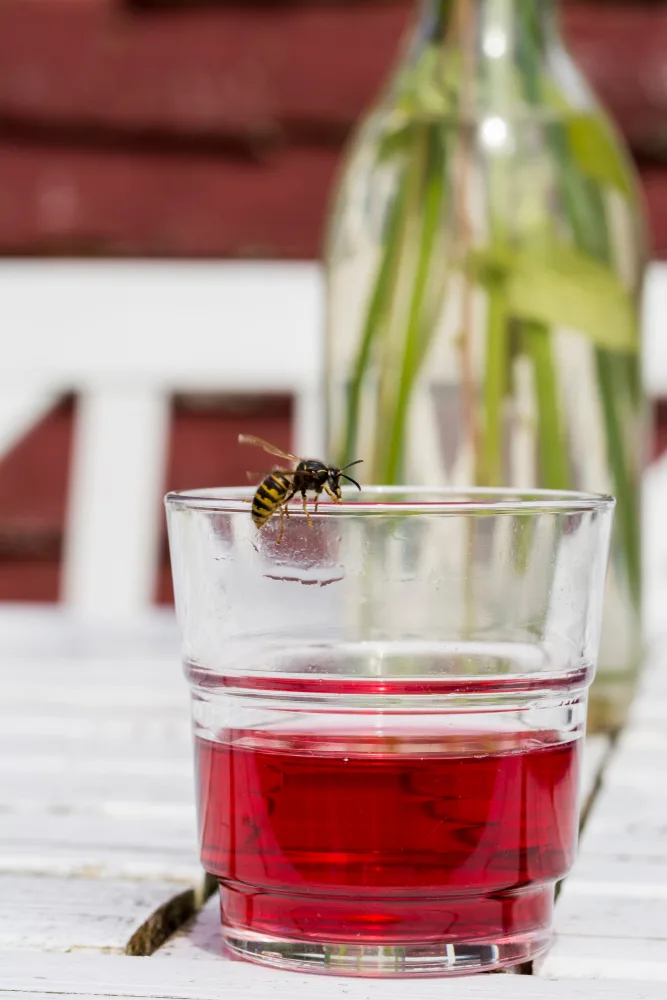
Are you being harassed by yellow jackets when eating outside? An effective way to divert their attention away from you is to set out a cup or two of sugary drinks for their consumption. Cola or cream soda works great for this.
2. Hang a fake wasp nest
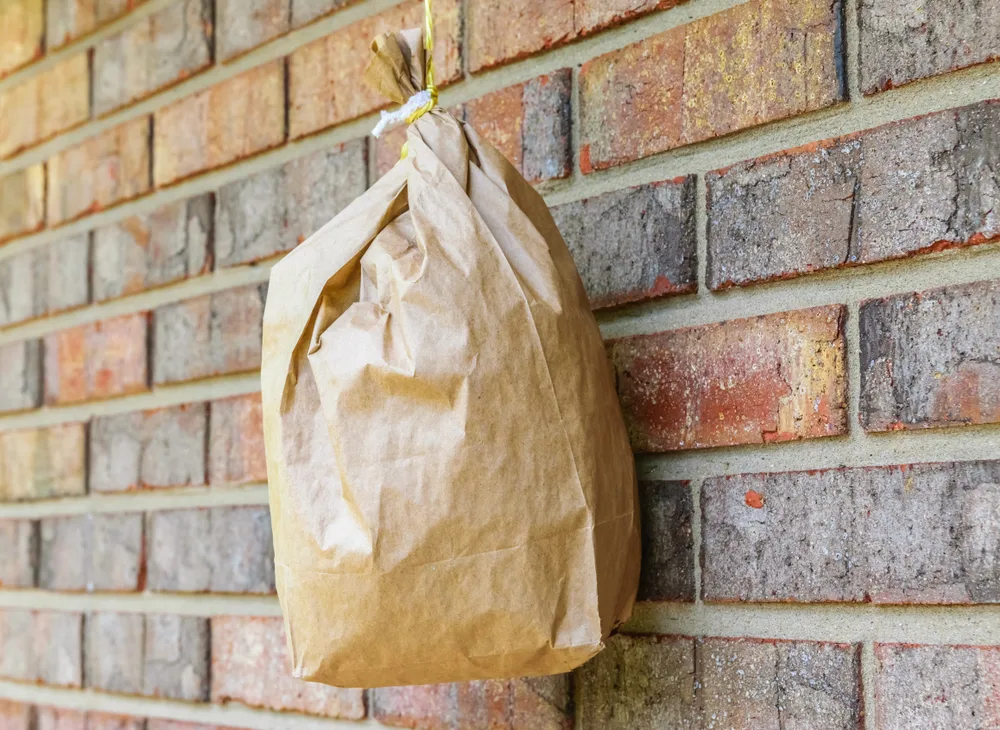
Wasps are very territorial and won’t build a nest near another wasp colony. Put up a few fake nests (like these) around your yard in spots where you spend time and other high traffic areas.
3. Wait until winter to remove a nest
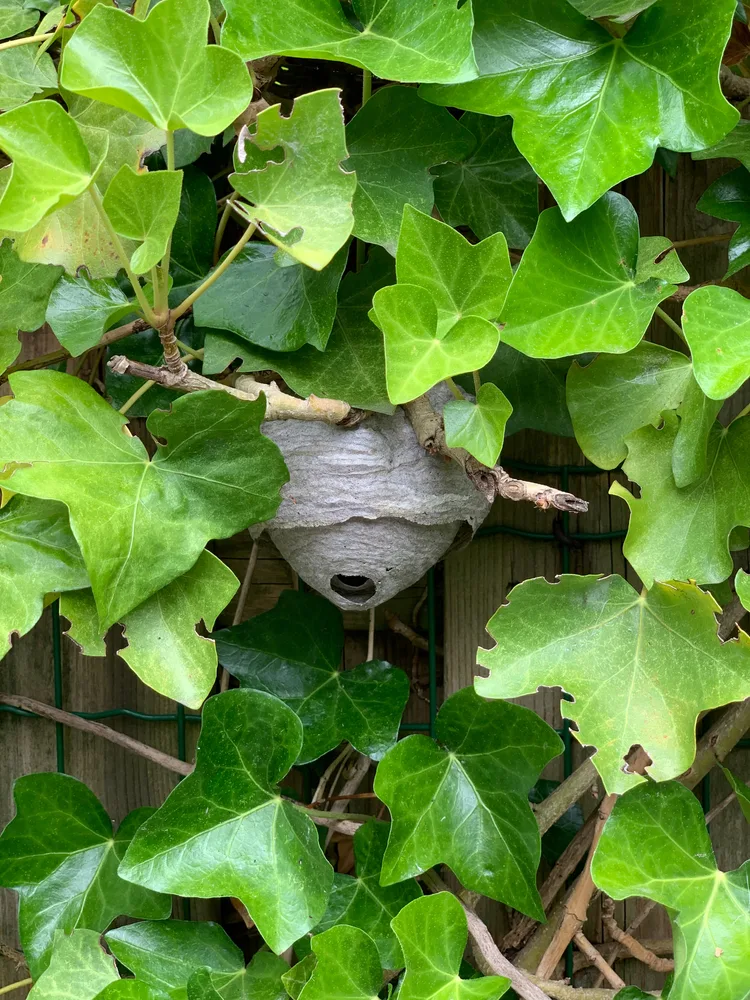
In social wasp species, all but one queen dies off in winter. If you can wait it out and allow their natural life cycle to complete, it will but much easier to handle the nest when there aren’t hundreds of angry wasps ready and willing to defend it.
4. Homemade wasp repellent
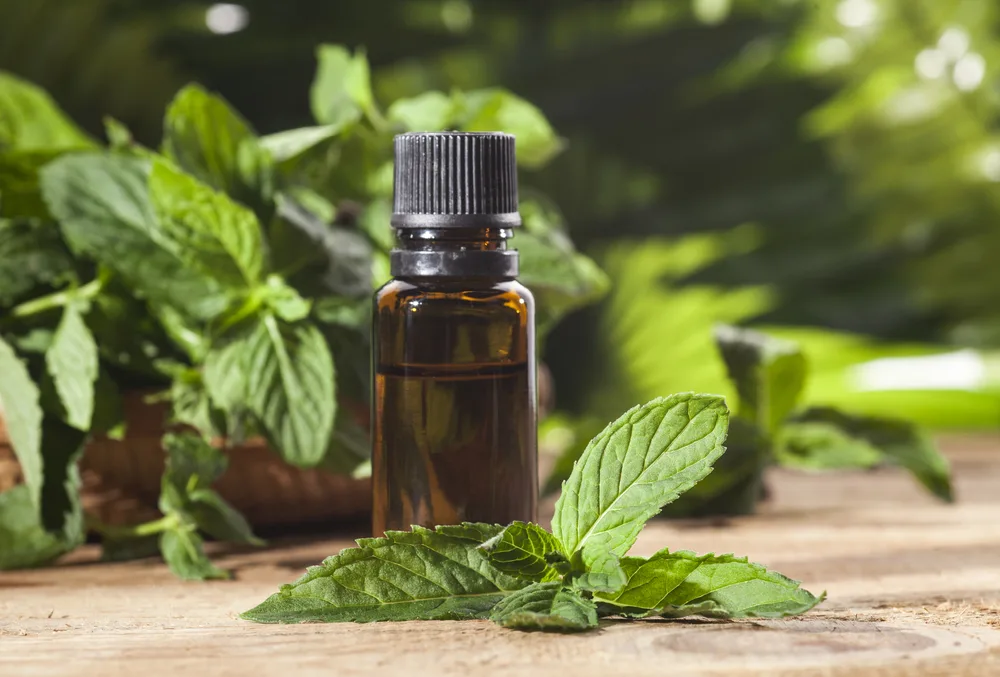
A dew drop of peppermint essential oil mixed with a teaspoon of carrier oil (such as olive oil or liquid coconut oil) and rubbed onto the skin can help keep wasps away when you’re working in the yard.
A blend of peppermint, clove, lemongrass, and geranium oils with a few drops of dish soap can be used to spray tabletops and other outdoor surfaces.
5. Use plain water
Wasps build nests in a dry, sheltered spot that is protected from the elements. You can encourage them to move to a different area (without killing them) by spraying the nest with a hose.
Stand a good distance away and set your hose sprayer to a gentle, rain-like setting. Thoroughly soak the nest in this manner and repeat over the next few days.
When possible, do this as early in the season as possible so there are fewer workers and drones to contend with.
6. Nest relocation
If you have a heart of gold and nerves of steel, relocating a nest to a different spot in your yard is another option.
However we would always advise that you use a specialist professional for a job such as this.
The trick is to wait until dark when the wasps are in for the night and sleeping. Decide where you want to relocate the nest ahead of time.
Using a large plastic bowl to contain the nest and a thick piece of plastic as a lid, slide the lid over the bowl to sever the connection to its perch.
Carefully carry the nest to your chosen site and gently set it down, leaving the lid on. Wait about an hour before returning to remove the lid.

Get the famous Rural Sprout newsletter delivered to your inbox.
Including Sunday musings from our editor, Tracey, as well as “What’s Up Wednesday” our roundup of what’s in season and new article updates and alerts.

